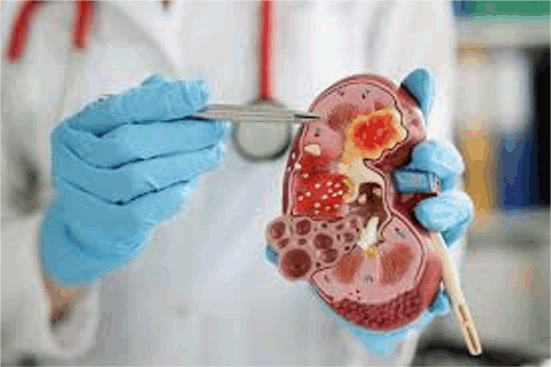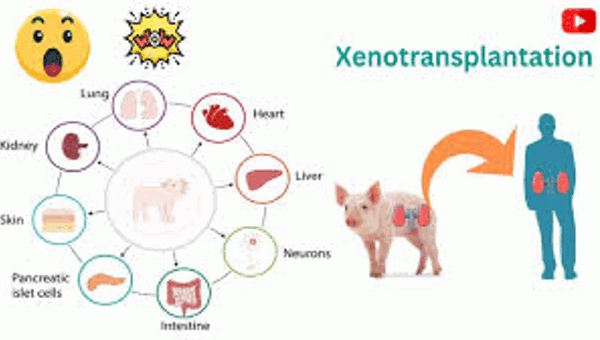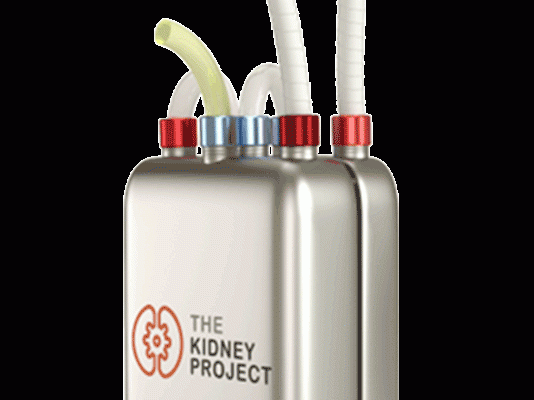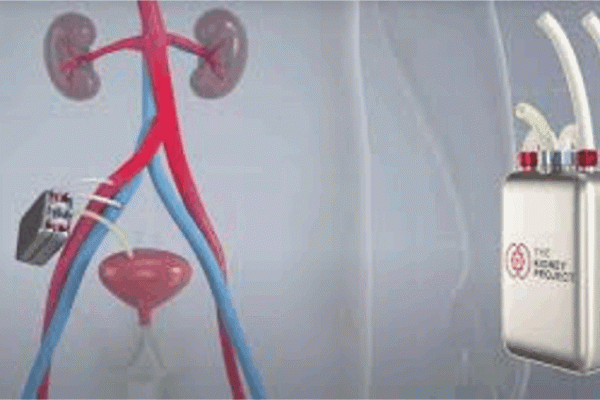신장의 혁신: 실험실에서 배양한 완전한 장기가 쥐에서 작동함
작성자: 앤디 코글란
2013년 4월 14일
https://www.youtube.com/embed/5wfdhB_VyJw?html5=1?feature=oembed
비디오: 생체공학 신장이 소변을 만든다
오래된 신장의 비계 위에 건설되고 있는 새로운 쥐 신장(이미지: Ott Lab, 매사추세츠 종합병원 재생의학 센터)
처음으로 실험실에서 배양한 완전한 신장이 쥐에게 성공적으로 이식되어 정상적인 신장처럼 소변을 여과하고 배출했습니다.
이 획기적인 발전은 잠재적으로 무한한 장기 공급을 제공할 수 있는 인간 규모 버전의 길을 열어 수혜자가 일치하는 기증 신장을 기다릴 필요가 없도록 합니다.
기관과 같은 단순한 조직을 가진 사람들에게도 유사한 기술이 이미 성공적으로 적용되었습니다. 그러나 신장은 성공적으로 재현된 기관 중 단연 가장 복잡한 기관입니다.
쥐의 신장을 개발한 팀의 책임자인 Harald Ott는 “이 기술을 인간 크기 이식으로 확장할 수 있다면 현재 기증 신장을 기다리고 있는 신부전증 환자는 이론적으로 필요에 따라 성장한 장기를 받을 수 있습니다”라고 말합니다. 보스턴의 매사추세츠 종합병원에서.
“이상적인 세계에서는 그러한 이식편이 환자 유래 세포에서 생산될 수 있어 기증 장기 부족과 장기 면역억제제의 필요성을 모두 극복할 수 있습니다.”라고 Ott는 말합니다. 현재 미국에서만 매년 18,000건의 이식이 이루어지고 있지만 100,000명의 미국인이 대기자 명단에 남아 있습니다.
스트립 및 코팅
쥐의 신장을 만들기 위해 Ott와 그의 동료들은 건강한 “기증자” 쥐의 신장을 채취하고 화학 용액을 사용하여 기본 세포를 씻어내고 장기의 비계를 남겼습니다. 생물학적으로 불활성인 콜라겐으로 만들어졌기 때문에 받는 사람의 신체가 거부하는 문제가 없습니다.
다음으로, 연구팀은 비계의 내부 표면을 새로운 세포로 코팅하여 장기의 “살”을 다시 자라게 하는 작업에 착수했습니다. 인간의 경우에는 아마도 받는 사람에게서 나오는 것이므로 모든 육체는 그 사람의 것이 될 것입니다.
신장은 기관에 적용되는 접근 방식을 사용하기에는 너무 복잡했습니다. 즉, 수혜자의 세포 욕조에 담그기만 하면 비계가 코팅되었습니다.
대신, 연구팀은 산소와 영양분이 들어 있는 유리 챔버에 신장 비계를 배치하고 일반적으로 소변이 신장에서 배출되는 신장 동맥, 정맥 및 요관의 돌출된 끝 부분에 튜브를 부착했습니다. 그들은 동맥과 정맥에 연결된 관을 통해 인간 줄기세포를 흐르게 하여 혈관 내부를 다시 코팅했습니다. 그들은 요관을 통해 갓 태어난 쥐의 신장 세포를 공급하여 신장의 소변 여과 시스템을 구성하는 미로 세뇨관과 관을 다시 코팅했습니다.
마치 배아 쥐에서 자라는 것처럼 세포를 장기에 공급하는 정확한 압력을 설정하기 위해 많은 시도가 필요했습니다. 놀랍게도 신장의 복잡성으로 인해 세포는 기관의 여러 부분에 필요한 세포로 정확하게 분화되었습니다. Ott는 “우리는 기관 기질의 특정 영역에 위치한 올바른 세포 유형을 발견했습니다.”라고 말했습니다.
완전히 다시 코팅하는 데 약 2주가 걸린 신장은 실험실과 쥐에게 이식되었을 때 모두 작동했습니다. 그들은 자연적인 신장만큼 잘 걸러지지는 않았지만 소변을 걸러내고 배출했습니다. 오트는 기술을 다듬으면 기능이 향상될 수 있다고 확신한다.
인간과 돼지
연구팀은 현재 인간 신장과 돼지 신장을 사용하여 동일한 절차를 시도하고 있는데, 인간 기증자가 부족한 경우 비계를 만드는 데 사용할 수 있습니다. 연구팀은 이미 돼지 신장에 인간 세포를 성공적으로 이식했지만, 오트 박사는 장기의 돼지 구성 요소가 인간에게 이식될 때 거부 반응을 일으키지 않는다는 것을 보장하기 위해서는 추가 연구가 필수적이라고 말했습니다.
돼지의 심장 판막과 기타 “불활성” 조직이 이미 거부 반응 없이 인간에게 성공적으로 사용되었다는 사실은 이것이 큰 문제가 되지 않을 것임을 시사합니다.
현장에서 일하는 다른 연구자들은 팀이 이렇게 복잡한 기관을 재현하는 데 성공한 것을 환영했습니다. 영국 에딘버러 대학의 제이미 데이비스(Jamie Davies)는 “연구원들은 현장에서 대부분이 신장과 같은 복잡한 장기에는 불가능하다고 생각하는 기술을 채택하고 이를 작동시키는 방법을 공들여 개발했다”고 말했습니다. 작년에 실험실에서 처음부터 신장을 성장시키려는 시도에서 어느 정도 진전을 이룬 팀의 이야기입니다. “복잡한 기관에서도 재세포화가 가능하다는 것을 보여줌으로써 그들의 연구는 다른 신체 시스템의 공학에 대한 유사한 접근 방식을 자극할 것입니다.”
저널 참조: Nature Medicine, DOI: 10.1038/nm.3154
Kidney breakthrough: complete lab-grown organ works in rats
By Andy Coghlan
14 April 2013
Video: Bioengineered kidney makes urine

For the first time, complete lab-grown kidneys have been successfully transplanted into rats, filtering and discharging urine as a normal kidney would.
The breakthrough paves the way for human-scale versions, which could potentially provide an inexhaustible supply of organs, eliminating the need for recipients to wait for a matching donor kidney .
Similar techniques have already been applied successfully in people with simpler tissue, such as windpipes. But the kidney is by far the most complex organ successfully recreated.
“If this technology can be scaled to human-size grafts, patients suffering from renal failure, who are currently waiting for donor kidneys, could theoretically receive an organ grown on demand,” says Harald Ott, head of the team that developed the rat kidneys at the Massachusetts General Hospital in Boston.
“In an ideal world, such grafts could be produced from patient-derived cells, enabling us to overcome both donor organ shortages and the need for long-term immunosuppression drugs,” says Ott. Currently in the US alone, 18,000 transplants are carried out each year, but 100,000 Americans remain on waiting lists.
Strip and coat
To make the rat kidneys, Ott and his colleagues took kidneys from healthy “donor” rats and used a chemical solution to wash away the native cells, leaving behind the organ’s scaffold. Because this is made of collagen, a biologically inert material, there is no issue of the recipient’s body rejecting it.
Next, the team set about regrowing the “flesh” of the organ by coating the inner surfaces of the scaffold with new cells. In the case of humans, these would likely come from the recipient, so all the flesh would be their own.
The kidney was too complex to use the approach applied to the windpipe – in which its scaffold was coated by simply immersing it in a bath of the recipient’s cells.
Instead, the team placed the kidney scaffolds in glass chambers containing oxygen and nutrients, and attached tubes to the protruding ends of the renal artery, vein and ureter – through which urine normally exits the kidney. They recoated the insides of the blood vessels by flowing human stem cells through the tubes attached to the artery and vein. Through the ureter, they fed kidney cells from newborn rats, re-coating the labyrinthine tubules and ducts that make up the kidney’s urine filtration system.
It took many attempts to establish the precise pressures at which to feed the cells into the organ, as if it was growing in an embryonic rat. Remarkably, given the complexity of the kidney, the cells differentiated into exactly those required in the different compartments of the organ. “We found the correct cell types homed in to specific regions in the organ matrix,” says Ott.
The kidneys, which took about a fortnight to fully recoat, worked both in the lab and when transplanted into rats. They filtered out and discharged urine, although they did not sieve it as well as a natural kidney would. Ott is confident that the function can be improved by refining the technique.
Humans and pigs
The team is now attempting the same procedure using human kidneys, and also pig kidneys, which could be used to make scaffolds if there were a scarcity of human donors. The team has already successfully repopulated pig kidneys with human cells, but Ott says further studies are vital to guarantee that the pig components of the organ do not cause rejection when transplanted into humans.
The fact that heart valves and other “inert” tissues from pigs are already successfully used in humans without rejection suggests that this will not be a big problem.
Other researchers working in the field hailed the team’s success at recreating such a complex organ. “The researchers have taken a technique that most in the field thought would be impossible for complex organs such as the kidney, and have painstakingly developed a method to make it work,” says Jamie Davies at the University of Edinburgh, UK, who was part of a team that last year made some headway in their attempts to grow kidneys from scratch in the lab. “By showing that recellularisation is feasible even for complicated organs, their work will stimulate similar approaches to the engineering of other body systems.”
Journal reference: Nature Medicine, DOI: 10.1038/nm.3154












답글 남기기